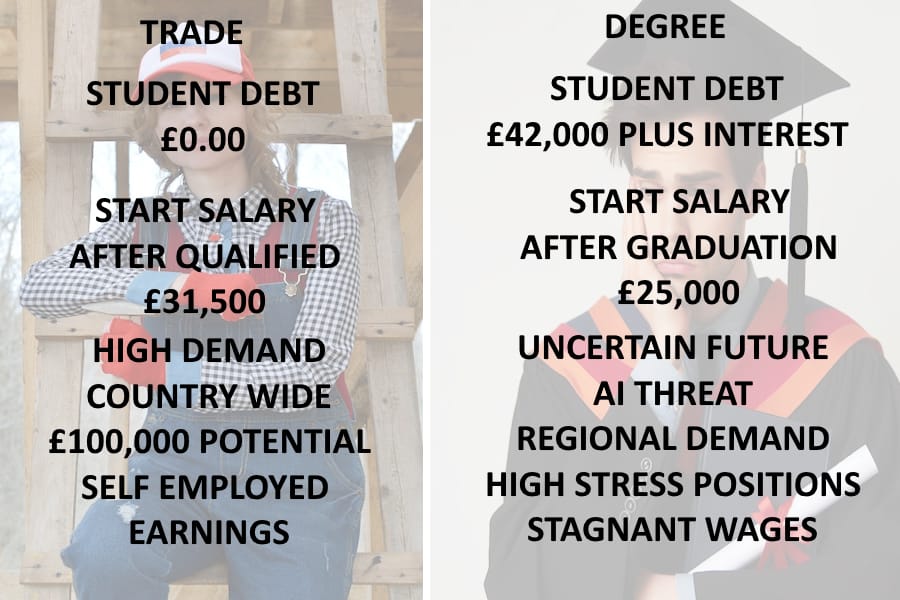Rethinking the UK's Housing Crisis: A Blueprint for Affordable, Sustainable Communities
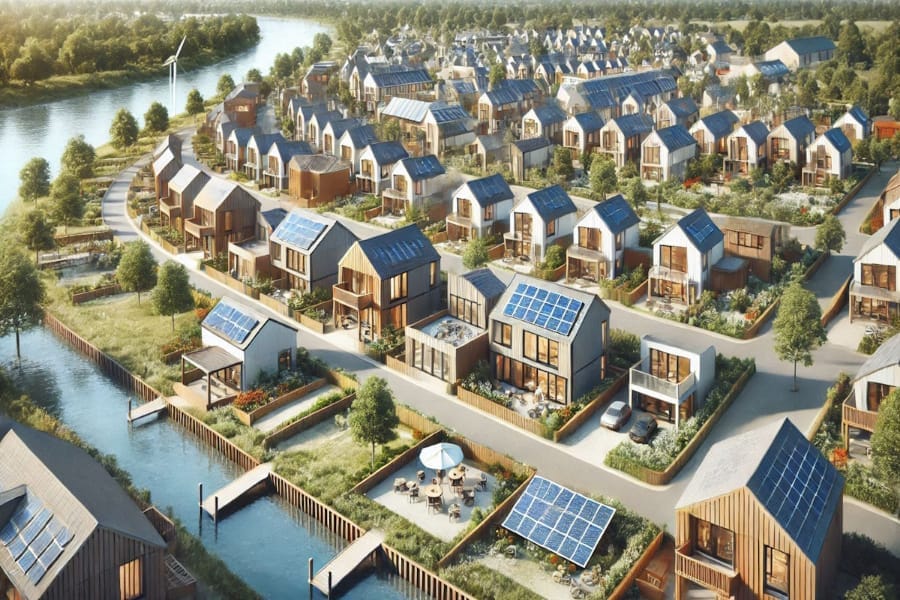
Publish Date: Last Updated: 10th February 2025
Author: nick smith- With the help of CHATGPT
The UK is in the midst of a housing crisis, driven by a combination of increasing population, high rents, and house prices that have spiraled out of reach for many working people. The government’s plan to build 1.5 million homes by 2029 may sound ambitious, but it’s simply not enough to address the immediate needs of the population or make housing genuinely affordable. To solve this crisis, the UK must embrace innovation, speed, and sustainability, revisiting the post-war ethos of mass housing solutions while adapting to modern needs.
The Current Housing Crisis
Unmet Housing Demand
The UK’s population is growing, fueled largely by net migration, which has averaged around 800,000 people per year in recent years. Over the next five years, this could add up to 4 million new residents. With an average household size of 2.4 individuals, this equates to a demand for 1.67 million additional homes just to keep up with population growth.
Yet the government’s plan to build 300,000 homes per year falls short of this target, even under ideal conditions. Compounding the issue is a labor shortage in the construction industry, which lacks an estimated 300,000 workers needed to meet housing targets.
Rising Housing Costs
The shortage of housing has driven rents and house prices to unsustainable levels. Many renters are now paying more than a third of their income on rent, leaving little for savings or other necessities. This creates a vicious cycle where people can neither afford to rent comfortably nor save for a deposit to buy a home.
A New Approach: Affordable Wooden Estates
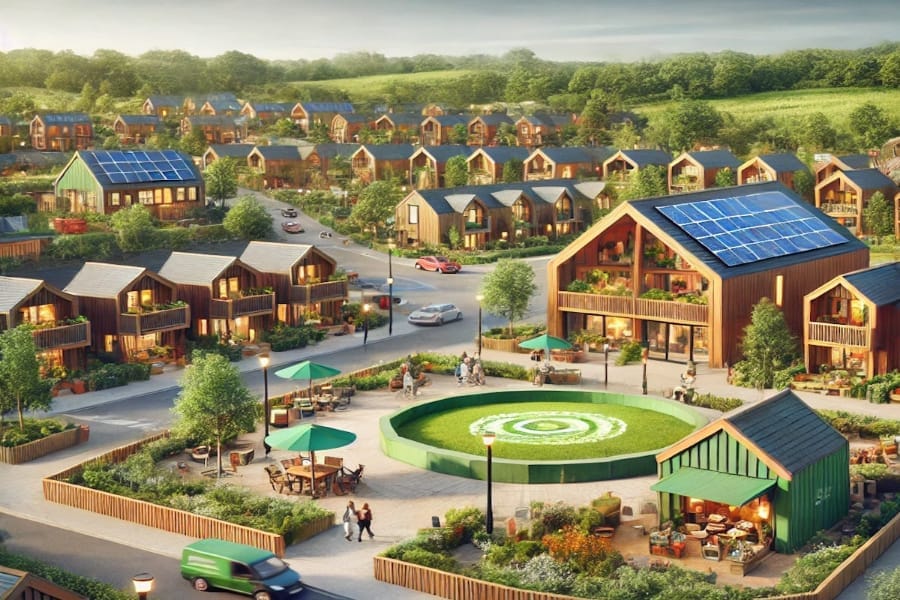
Learning from Post-War Innovation
After World War II, the UK faced a similar housing shortage and responded with the rapid construction of prefabricated (prefab) homes. These homes were affordable, quick to assemble, and provided shelter to millions of families during a time of need. Today, the UK can take inspiration from this approach by building modern prefab wooden homes.
Affordable, Sustainable Housing
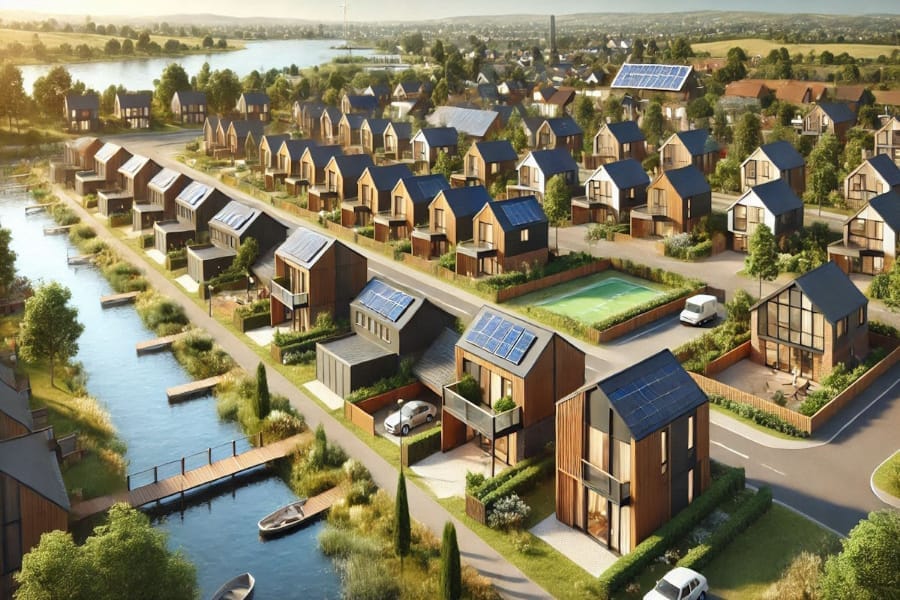
Modern wooden houses are a cost-effective and environmentally friendly alternative to traditional brick-and-mortar construction. Key benefits include:
- Cost Efficiency: Pre-built wooden homes can cost as little as £25,000 for a three-bedroom house, making them an affordable option for first-time buyers and renters.
- Speed of Construction: Prefabricated homes can be assembled in weeks, allowing for rapid development of housing estates.
- Sustainability: Wooden homes have a lower carbon footprint compared to traditional construction methods. Estates could also incorporate renewable energy sources like wind and solar power and water recycling systems, further reducing their environmental impact.
Creating Livable Communities
Unlike the dense, urban developments that dominate today’s housing projects, wooden estates can be designed with quality of life in mind. These communities would feature:
- Green spaces for recreation and relaxation.
- Energy-efficient homes with modern amenities.
- Affordable rental and ownership options to provide a first step on the housing ladder.
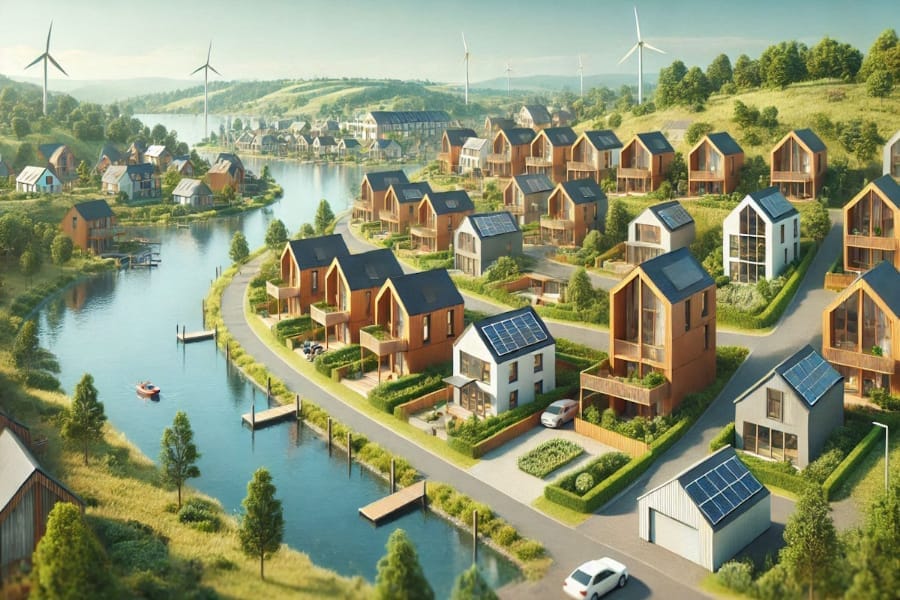
A Dual Strategy: Wooden Estates and Traditional Housing
Building wooden estates should not replace traditional housing but complement it. The UK needs both to meet the diverse needs of its population:
- Immediate Relief: Wooden estates provide an urgent solution for families struggling to find affordable housing, quickly increasing supply and driving down rents.
- Long-Term Growth: Conventional brick-and-mortar homes ensure a mix of housing stock for future generations.
By pursuing this dual strategy, the UK can begin to address the underlying causes of the housing crisis while also tackling the immediate problem of high rents and inadequate housing supply.
Empowering Renters and Buyers
A significant advantage of wooden estates is their potential to transition renters into homeowners. By offering renters the option to buy their homes, these estates provide a pathway to financial stability and asset ownership. This could help reverse the trend of rising wealth inequality, which has been exacerbated by unaffordable housing.
A selction of YouTube Videos on Wooden houses and how quick they are to build
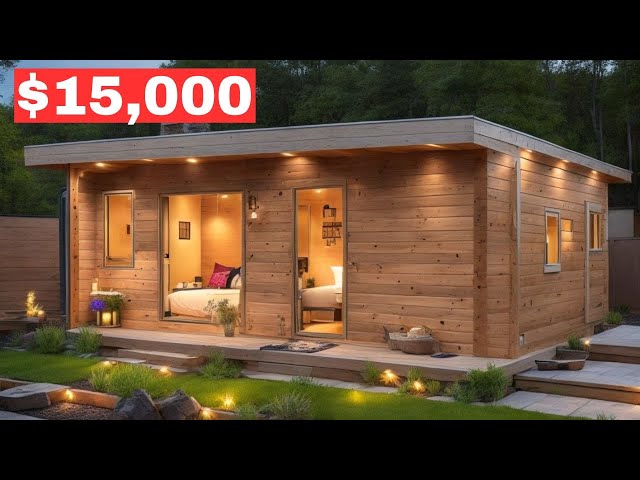
Inside 25 Affordable Tiny Home Kits and Prefab Home for Sale at Amazon and Home Depot
YouTube Channel: Modular Homes and Tiny House
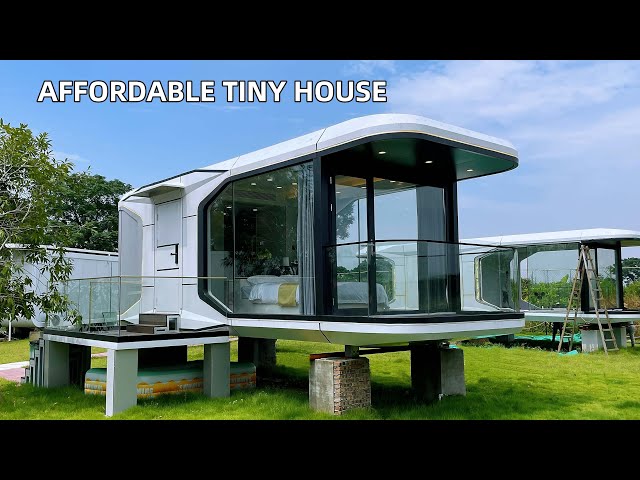
A Modern Tiny House Will Blow Your Mind | Volferda Capsule House E5 Tour
YouTube Channel: Volferda_capsulehouse
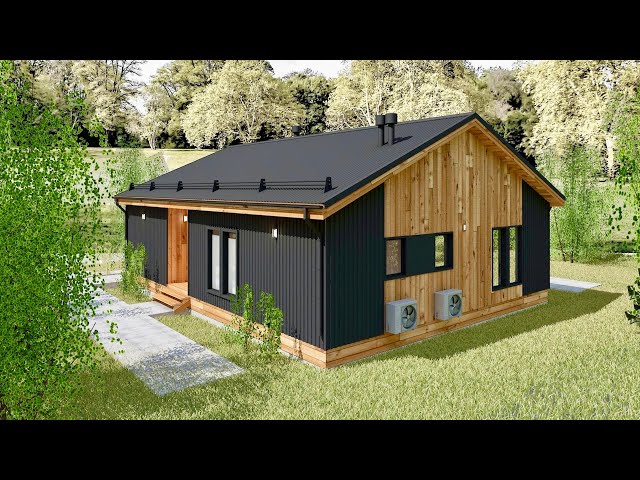
The German house in 4 days. From start to finish
YouTube Channel: Perfect IDEA
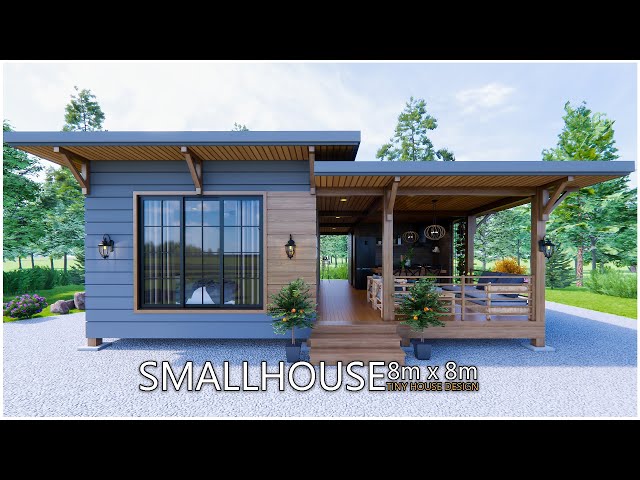
Beautiful Tiny House | House Design (Wooden house ) 8m x 8m
YouTube Channel: Tiny House Design
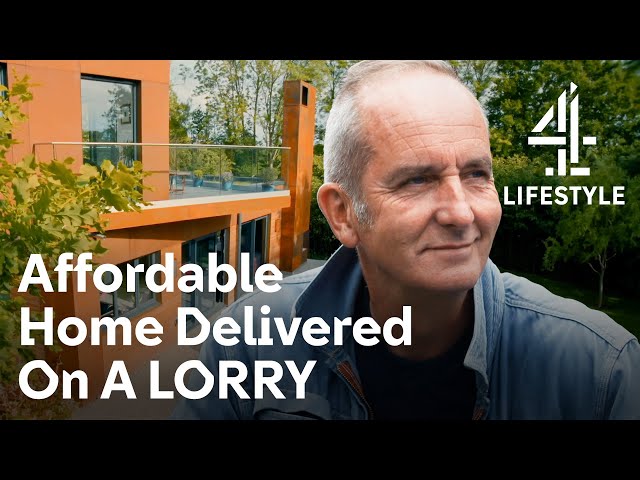
Ready-Made Home Assembled In Just 24 Hours! | Grand Designs | Channel 4 Lifestyle
YouTube Channel: Channel 4 Homes
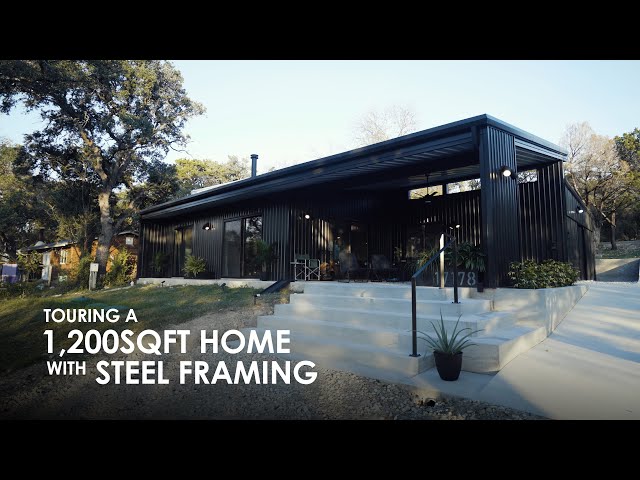
1200sqft Kit Home built with Pre-Assembled Steel Framing
YouTube Channel: Volstrukt
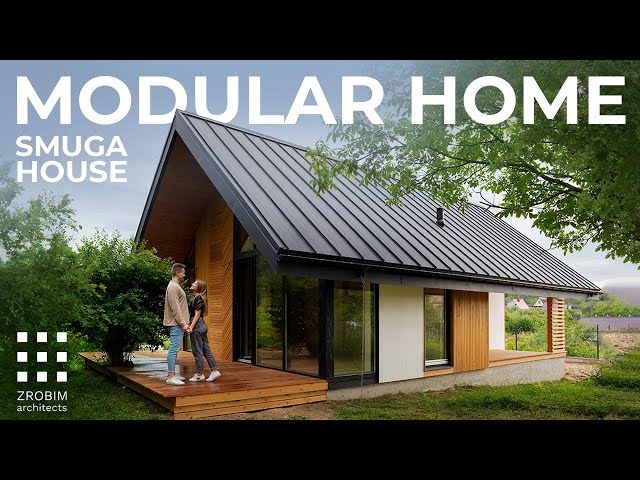
Prefab Modular Home, overview of modern sustainable architecture
YouTube Channel: ZROBIM architects International
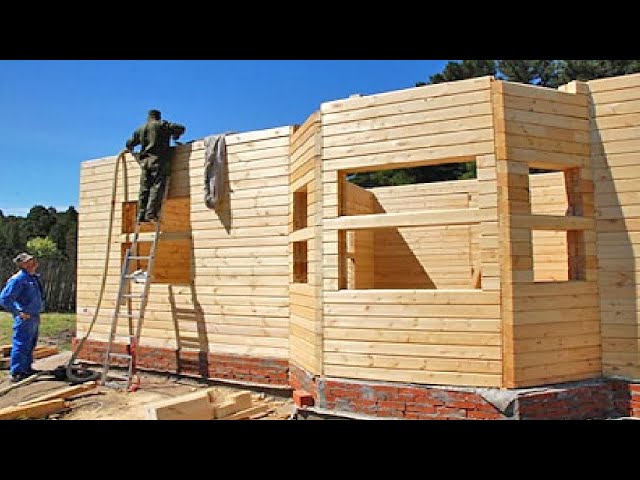
Amazing Fastest Wooden House Construction Method - Intelligent Process Log House Building in 1 Day
YouTube Channel: Machinery Magazine
The Current Strategy: Why It’s Falling Short
The government’s target of 1.5 million homes by 2029 will, at best, maintain the current status quo. This strategy overlooks key factors:
- Unaffordability: Even if these homes are built, they are unlikely to be affordable for the majority of working people.
- Supply Chain Issues: Labor shortages and rising material costs will likely delay progress.
- Lack of Innovation: The focus on traditional construction methods fails to address the need for rapid, cost-effective solutions.
A Call to Action
The UK must rethink its approach to housing. The government, private developers, and local councils need to embrace innovative solutions like wooden estates to tackle the crisis head-on. This will require:
- Policy Support: Streamlined planning permissions and incentives for sustainable building practices.
- Investment in Innovation: Funding for prefab housing technology and renewable energy infrastructure.
- Public-Private Collaboration: Partnerships between government and private developers to deliver affordable housing at scale.
Conclusion
The UK’s housing crisis is a complex problem, but it is not insurmountable. By combining innovative solutions like affordable wooden estates with traditional construction, the UK can create sustainable, livable communities that address the immediate housing shortage while paving the way for long-term stability. This approach won’t just bring rents back to manageable levels—it will provide hope and opportunity for millions of people seeking a place to call home.
Trending AI News Articles
AI Questions and Answers section for Rethinking the UKs Housing Crisis
Welcome to a new feature where you can interact with our AI called Jeannie. You can ask her anything relating to this article. If this feature is available, you should see a small genie lamp above this text. Click on the lamp to start a chat or view the following questions that Jeannie has answered relating to Rethinking the UKs Housing Crisis.
Be the first to ask our Jeannie AI a question about this article
Look for the gold latern at the bottom right of your screen and click on it to enable Jeannie AI Chat.







